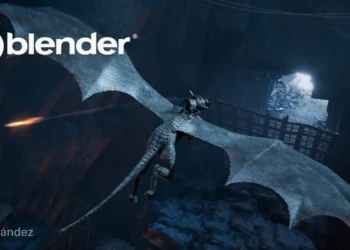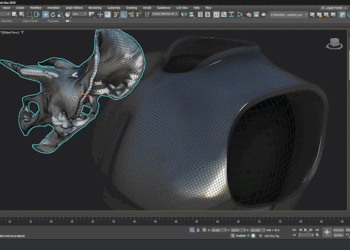Isotropix has announced the release of Clarisse 5 including of 100 new features and improvements. New features include improved layout and set-dressing with new orthographic views, a fully revamped graph editor and a new USD exporter. Rendering has been improved with the addition of a new standard material based on the Autodesk Standard Surface, whole new SSS engine and many other improvements that speed up both render times and quality. Clarisse 5 also introduces a whole new lighting engine allowing you to turn any geometries and emissive surfaces into lights. Finally, Clarisse 5 simplifies pipeline integration thanks to Python 3 support and VFX platform 2020 compliance.
You can read more about Clarisse 5 on the Isotropix website.
The release also marks a change in pricing and special offers. Exclusively available for solo artists (indies and freelancers) Isotropix introduces a 30-day node-locked license of Clarisse iFX at $59 as well as a 30-day floating license of CNode at $33. In addition, the company offers them a new pack of 5 (five) 1-year CNode floating licenses at $599. These new offers are rentals and do not require special subscription commitment terms or any automatic renewals. The company also updated its policy for its Clarisse indie rental and permanent licenses: starting from Clarisse 5, solo artists can now run CNode on any of their computers that is licensed with a Clarisse iFX for Indies license.
To celebrate its 10 year anniversary, the company is also introducing to all its other customers a new offer that bundles 10 free 1-year CNode licenses with each purchase of a Clarisse license (valid exclusively once for a new order placed between May 5th 2021 and December 31st 2021). For the 2 years following the purchase, the company is also offering its customers a smooth ramp up on the renewals of the free 1-year CNode licenses that came bundled free with their order. Isotropix will offer a 50% and 25% discount on the renewal price of these CNode licenses, the first and second year respectively.
Isotropix has also lowered its pricing for Clarisse BUiLDER licenses starting now at $3,999 for 1-year licenses and $6,599 for permanent ones, both including 1 year of maintenance.
More information about offers and pricing is available on the company’s website on https://shop.isotropix.com
For reader who just want to learn the software, Isotropix updates its Clarisse Personal Learning Edition with all the features found in Clarisse 5. However, unlike previous versions of Clarisse PLE which were limited to Clarisse iFX, users can now use Clarisse BUiLDERwith its node-based scene assembly and sequence lighting workflow.
Clarisse 5 PLE can be downloaded for free on https://ple.isotropix.com








Clarisse deserves more love. It’s such a great program. I am excited to try out the USD features.
Amazing update !!! This software is the hidden king.
Agree with Burke.
It seems very cool. I do not know any companies that use it. I know a lot of places that look into using it and found it not worth the learning curve or price to implement into a pipeline.
Again this is just from my experience. I have not personally used the software, but would love to try it out. It seems super powerful and I’m not quite sure why more people aren’t using it.
Pretty sure DNEG used extensively.
High end studios use it, but I wonder how much utility it has for smaller shops doing arch viz?
Max goes into slug-mode when you have half a dozen xrefs, so I’m tempted by this.
Clarisse’s renderer is one of the very last things you’d want to use to render ArchViz, especially interiors 🙂
Yeah the render engine is lousy, just look at this..
https://www.artstation.com/artwork/nYlZd1
I don’t think one artwork can sum up the capabilities of the engine, but it’s Arnold/PRMan type of the engine. It’s made to handle large amount of complex geometry usually in exterior lighting scenarios, but it really chokes up quite a bit when rendering a lot of indirectly lit areas, which are common for ArchViz, especially interiors. That’s also the reason you see almost no one using Arnold for ArchViz 🙂
I don’t recommend clarisse for interiors. The use case for clarisse is large-scale exterior projects. And I think it’s render engine is fine for this use case.
Yeah, my point was that if you do ArchViz for living, you can’t really know whether your next client will want exterior or interior visualization, or often both. And having render engine which can’t cover all the possibilities and having to switch between engines for different projects, of sometimes even different shots within one project just doesn’t make much sense. Especially if those different shots share assets. Let alone having to maintain asset library for multiple renderers. It’s just not worth it if you are not a hobbyist but a professional who strives to be efficient and productive.